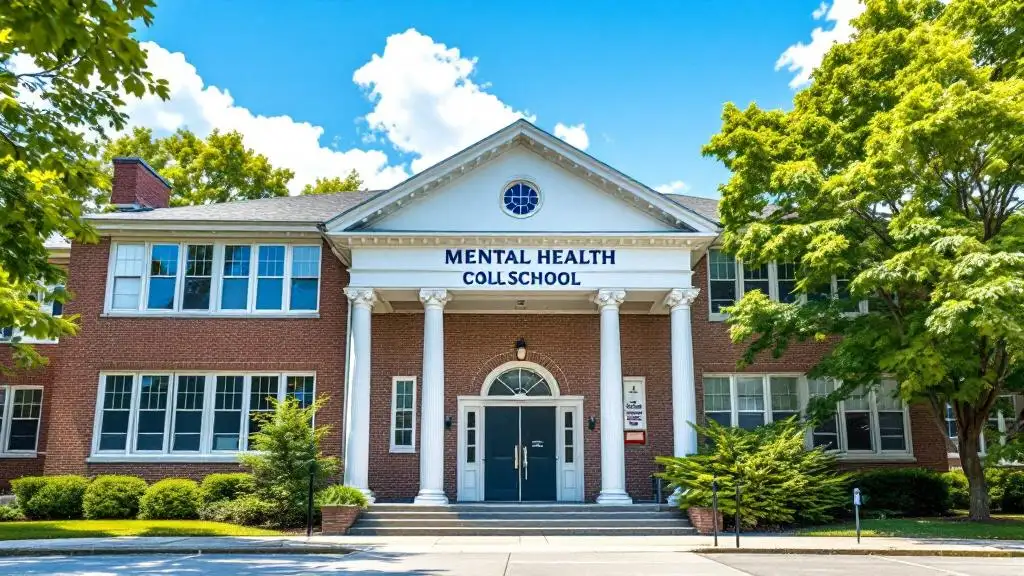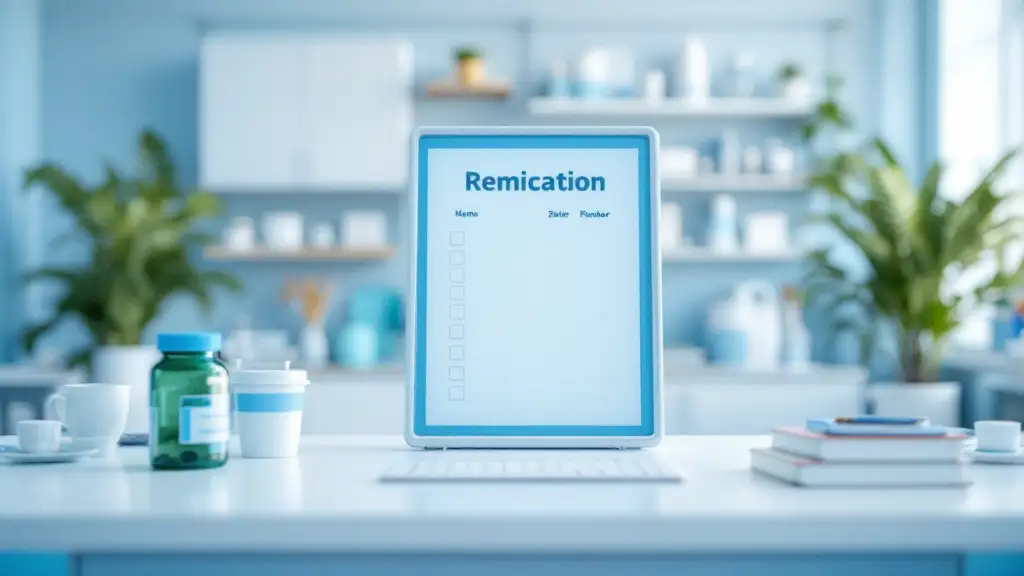Introduction to Mood Disorders Across Different Age Groups
Mood disorders encompass a range of mental health conditions that profoundly impact emotional states, from persistent sadness to extreme mood swings. Recognizing the patterns, symptoms, and causes of these disorders across the lifespan facilitates early diagnosis and effective management. This article explores how mood disorders develop, manifest, and are treated at various life stages—from childhood through old age—highlighting unique challenges and opportunities in ensuring mental wellbeing.
Understanding Symptoms of Mood Disorders Across All Ages
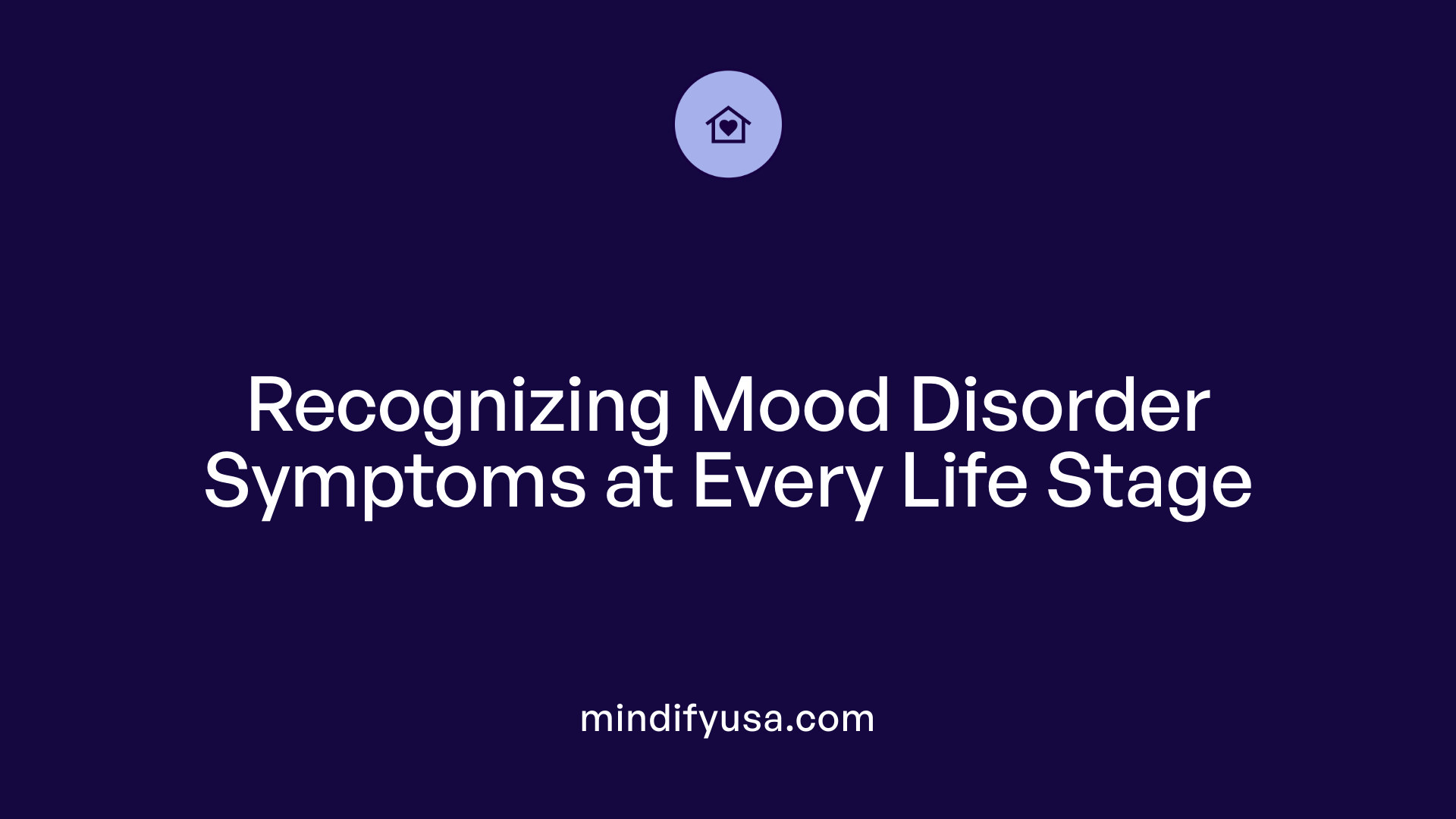
What are the common symptoms of mood disorders across different age groups?
Mood disorders manifest through a range of emotional, physical, and behavioral symptoms that can vary significantly depending on the age of the individual. At their core, these disorders typically involve persistent feelings of sadness, irritability, or a markedly diminished interest in activities that once brought pleasure.
In children and adolescents, symptoms often include irritability, frequent anger outbursts, and physical complaints such as headaches or stomachaches. These behavioral signs can sometimes be mistaken for behavioral problems, complicating diagnosis. Younger children might exhibit social withdrawal, problems at school, or changes in eating and sleep patterns.
Adults tend to experience more pronounced emotional symptoms such as enduring hopelessness, feelings of worthlessness, and thoughts about death or suicidal ideation. Physical symptoms like sleep disturbances—ranging from insomnia to hypersomnia—and appetite changes are common. Fatigue, difficulty concentrating, and a sense of ongoing emotional pain are also hallmark signs.
Older adults often present with overlapping symptoms including sleep issues, physical aches, and social withdrawal. They may also show signs of cognitive decline, which can sometimes mask or complicate mood disorder diagnoses. Behaviorally, they might experience irritability or agitation, and physical health issues can exacerbate emotional symptoms.
Despite these distinctions, the underlying emotional symptoms—sadness, irritability, and loss of interest—are universal indicators of mood disorders, highlighting the importance of age-sensitive assessment and tailored intervention.
Contributing Factors in Mood Disorder Development at Life Stages
What factors contribute to the development of mood disorders during different stages of life?
Mood disorders are complex conditions influenced by a variety of interacting factors that evolve over a person’s lifespan. Genetic predisposition plays a significant role, often running in families and increasing susceptibility to disorders such as depression and bipolar disorder.
Biological factors are equally important. Imbalances in neurotransmitters like serotonin, dopamine, and norepinephrine disrupt normal mood regulation. Changes in brain structure, including regions like the amygdala and prefrontal cortex, also contribute to mood dysregulation.
Environmental stressors are major triggers, especially during vulnerable periods. Childhood trauma or abuse, stressful life transitions such as divorce or job loss, and significant personal losses can precipitate mood episodes. Medical conditions affecting brain function—like thyroid disorders or neurological illnesses—can further influence onset.
Hormonal fluctuations during key reproductive stages, including pregnancy, postpartum, and menopause, significantly impact mood. For example, estrogen's influence on serotonin means hormonal shifts can trigger mood episodes in women.
Psychosocial aspects, such as low self-esteem, poor coping skills, and limited social support, increase the risk. These factors might intensify during certain life phases, such as adolescence, midlife, or old age.
Overall, mood disorders emerge from a blend of biological, environmental, and psychological factors interacting across an individual’s life span, emphasizing the need for a comprehensive and personalized approach to diagnosis and treatment.
What biological mechanisms underlie mood disorders, and how do they vary across age groups?
At the core of mood disorders are disruptions in neurotransmitter systems, primarily involving serotonin, dopamine, and norepinephrine. These chemical imbalances impair mood regulation and other cognitive functions.
Structural changes in the brain also play a role. In mood disorders, especially bipolar disorder and depression, alterations are often observed in the amygdala, prefrontal cortex, and hippocampus. Such physical changes can influence emotion processing, memory, and stress response.
Hormonal fluctuations have specific implications during reproductive stages. During pregnancy, postpartum, and menopause, shifts in estrogen and progesterone levels can significantly impact neurotransmitter activity, thus influencing mood.
In children and adolescents, ongoing brain development and genetic predispositions make them particularly vulnerable to mood fluctuations. Neurochemical systems are still maturing, which can lead to different symptom expression, such as irritability or physical complaints.
In older adults, neurodegenerative changes and cerebrovascular alterations may exacerbate mood symptoms. These age-related changes often overlap with other medical issues, making diagnosis more complex and treatment more challenging.
Recognizing these biological variations across age groups helps clinicians tailor interventions appropriately, considering developmental and aging processes' specific impacts on mood regulation.
Diagnostic Approaches for Mood Disorders at Different Life Stages
How are mood disorders diagnosed throughout different ages?
Diagnosing mood disorders effectively requires an age-specific approach that considers the developmental stage of the individual. In children and adolescents, clinicians rely heavily on comprehensive clinical assessments that incorporate detailed histories from parents, teachers, and the young person themselves. These assessments focus on observable behaviors, mood fluctuations, and environmental influences, often utilizing standardized criteria from the DSM-5. Since children may not fully articulate their feelings, behavioral symptoms such as irritability, social withdrawal, or academic decline serve as important indicators.
For teenagers and adults, diagnosis involves analyzing the duration, severity, and impact of symptoms on daily life. Differentiating mood disorders from other mental health issues like attention-deficit/hyperactivity disorder (ADHD), anxiety, or conduct disorders is crucial. Clinicians evaluate for episodes of depression, mania, or hypomania characteristic of bipolar disorder, paying close attention to cycles of mood elevation and depression.
In older adults, diagnosis can be more complex due to overlapping symptoms with medical conditions such as dementia or neurological illnesses. Here, careful assessment includes evaluating symptom patterns over time, medication effects, and co-occurring conditions. Because mood episodes in older adults might be less pronounced or present atypically, clinicians often utilize structured interviews, mood logs, and collateral reports from family members.
Across all ages, trained mental health professionals employ various assessment tools, including semi-structured interviews, symptom checklists, and behavioral observations. Continuous follow-up is essential to monitor changes over time and adjust diagnoses accordingly, as mood episodes can fluctuate and evolve with age.
Developmentally appropriate assessment methods
Assessment methods are tailored to match the individual’s developmental capabilities. For children, play-based interventions and parent-report questionnaires can facilitate insight into mood and behavior. Adolescents benefit from confidential interviews that encourage openness, along with self-report measures to gauge mood and functioning. Adults and elderly patients typically undergo clinical interviews and standardized rating scales.
Use of structured interviews and diagnostic criteria (DSM)
Structured diagnostic tools, such as the Structured Clinical Interview for DSM (SCID), improve reliability and consistency in diagnosis across different providers. These structured interviews help differentiate mood disorders from other psychiatric or medical conditions that may mimic or coexist with mood symptoms.
Monitoring of mood episodes and cycling patterns in bipolar disorder
In bipolar disorder, understanding the pattern, frequency, and duration of mood episodes is vital. Clinicians often implement mood diaries, symptom tracking questionnaires, and longitudinal monitoring to observe cycling patterns—such as rapid cycling or mixed episodes—and to inform treatment strategies.
Differentiating mood disorders from other psychiatric and medical conditions
An accurate diagnosis involves ruling out other causes of mood symptoms, including thyroid dysfunction, neurological diseases, substance use, and medication side effects. Differentiating primary mood disorders from secondary mood symptoms due to medical conditions is essential for effective treatment.
Importance of ongoing assessment and flexibility in diagnosis
Mood disorders can change over time, requiring clinicians to maintain an ongoing assessment strategy. Flexibility in diagnosis allows for treatment adjustments as new symptoms emerge or as the patient’s condition evolves, ensuring a personalized and effective care plan.
| Aspect | Approach/Tool | Consideration |
|---|---|---|
| Developmentally appropriate assessment methods | Parent reports, behavioral observations, self-reports in teens | Ensures relevance to developmental stages |
| Use of structured interviews | SCID, Kiddie Schedule for Affective Disorders | Enhances diagnostic accuracy |
| Monitoring patterns in bipolar disorder | Mood diaries, symptom questionnaires | Detects cycle patterns, guides treatment |
| Differentiating from other conditions | Medical exams, lab tests, collateral histories | Ruling out medical and psychiatric mimics |
| Ongoing assessment | Follow-up interviews, rating scales, patient self-monitoring | Adapts to evolving clinical picture |
Understanding the nuances of mood disorder diagnosis at different ages is essential for effective management. It involves an integrated approach combining developmental awareness, structured tools, vigilant monitoring, and continuous reassessment to ensure accurate diagnosis and tailored treatment plans.
Treatment Modalities: Pharmacological and Psychotherapeutic Strategies
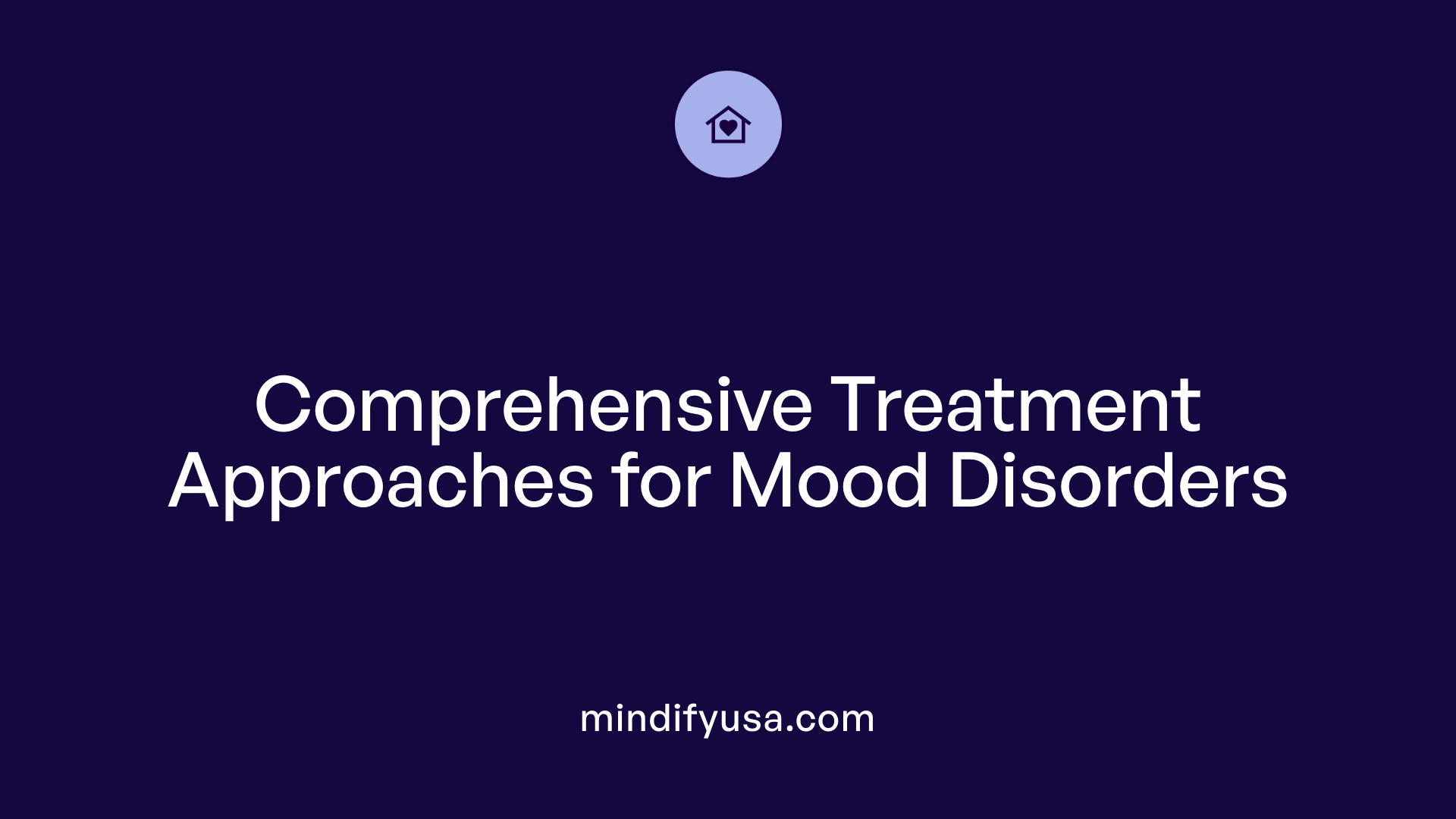
What treatment options are available for mood disorders at various ages?
Treatment strategies for mood disorders are multifaceted and tailored to the individual’s age, developmental stage, and specific clinical presentation. Across the lifespan, options include pharmacological interventions, psychotherapy, lifestyle modifications, and, in some cases, surgical or targeted hormonal treatments.
Pharmacologically, antidepressants such as selective serotonin reuptake inhibitors (SSRIs) and serotonin-norepinephrine reuptake inhibitors (SNRIs) are common for depression in adults and older populations. Mood stabilizers, including lithium and anticonvulsants, are crucial in managing bipolar disorder across ages, with particular considerations in children and seniors. Hormonal therapies, like estrogen supplements and neurosteroids, are employed mainly in women experiencing mood symptoms related to reproductive stages like menopause or postpartum.
For women with premenstrual dysphoric disorder (PMDD) or severe premenstrual syndrome (PMS), serotonergic antidepressants and oral contraceptives are often effective. In refractory cases, gonadotropin-releasing hormone (GnRH) analogs or surgical interventions may be considered, although these are reserved for severe, treatment-resistant cases.
Psychotherapy plays an integral role and includes modalities like cognitive-behavioral therapy (CBT), psychodynamic therapy, and interpersonal therapy (IPT). These approaches help address thought patterns, emotional regulation, and relationship issues, especially important in chronic mood disorders.
Lifestyle interventions such as regular exercise, sleep hygiene, stress reduction practices, and social engagement are vital adjuncts. They help improve mood stability and overall functioning.
Special considerations are necessary during reproductive stages. During pregnancy, treatment involves balancing maternal mental health needs with fetal safety, often favoring SSRIs when necessary. Postpartum depression management includes psychotherapy and medication, with close postpartum monitoring. Menopause-related mood symptoms may benefit from hormone therapy, including estrogen or neurosteroids, tailored to individual risks and benefits.
Older adults require careful medication management due to polypharmacy risks and age-related neurobiological changes. Combining SSRIs with therapies aimed at emotion regulation, social support, and cognitive engagement tends to improve outcomes.
Emerging targeted treatments, like GnRH analogs for severe PMDD or neurosteroids for refractory mood symptoms, expand the therapeutic landscape.
Overall, developing a comprehensive, personalized treatment plan involves considering the patient's age, reproductive status, medical history, and personal preferences. This individualized approach enhances treatment adherence and effectiveness, leading to better long-term management of mood disorders across the lifespan.
| Treatment Strategy | Applicable Age Group | Specific Considerations | Additional Notes |
|---|---|---|---|
| Antidepressants (SSRIs, SNRIs) | Children to Older adults | Safety profiles, pregnancy considerations | Used widely, monitor for side effects |
| Mood stabilizers (lithium, anticonvulsants) | Adolescents to Elderly | Blood level monitoring, kidney and thyroid function | Effective for bipolar disorder |
| Hormone therapies (estrogen, neurosteroids) | Women during reproductive stages | Hormonal fluctuations, risks during age transitions | Benefits mood, consider risks |
| Oral contraceptives and GnRH analogs | Women with PMS, PMDD | Symptom severity, reproductive planning | Options for severe cases |
| Psychotherapy (CBT, psychodynamic, IPT) | All ages | Therapy duration, patient engagement | Core component of treatment |
| Lifestyle modifications | All ages | Exercise, sleep hygiene, stress management | Supports pharmacological treatments |
| Targeted interventions (e.g., hormonal) | Specific severe cases | Based on hormonal imbalance or specific symptom profile | Expanding options for refractory cases |
How does the lifespan perspective influence treatment approaches?
Applying a lifespan perspective encourages clinicians to tailor interventions according to developmental and biological changes. In childhood, treatment emphasizes behavioral therapies and family support, often with cautious medication use. Adolescents with bipolar disorder may need specialized strategies addressing irritability and rapid mood shifts. During pregnancy and postpartum, treatment prioritizes maternal safety while managing mood symptoms effectively, often using the safest medications and nonpharmacological supports.
In menopause, hormone therapy can be beneficial when appropriately prescribed, and attention to sleep, mood, and cognitive health is crucial. For older adults, the focus shifts to minimally invasive medications, managing comorbidities, and promoting social engagement.
Overall, recognizing the unique needs of each life stage enhances the precision and effectiveness of mood disorder treatments. The goal is to minimize distress, improve functioning, and prevent chronicity or disability, thereby supporting mental health stability across the entire lifespan.
Hormonal Influences and Mood Disorders in Women Across the Lifespan
How do mood disorders related to hormonal changes affect women, especially during pregnancy, postpartum, and menopause?
Hormonal fluctuations are a significant factor influencing women’s mental health at various stages of life, including pregnancy, postpartum, and menopause. These changes impact brain structures, neurotransmitter systems, and gene regulation, thereby affecting mood and emotional well-being.
During pregnancy, hormonal levels such as estrogen and progesterone rise sharply to support fetal development. These elevated hormone levels can sometimes lead to mood disturbances, although many women experience improved mood. However, sudden hormonal declines postpartum—especially a rapid drop in estrogen and progesterone after childbirth—are strongly associated with postpartum depression and mood swings.
In menopause, declining estrogen levels can cause a range of mood symptoms. Many women report increased irritability, sadness, and anxiety during this transition. Hormonal imbalances also interfere with neurotransmitters like serotonin and endorphins, which are essential for regulating mood.
Furthermore, the biological influence of hormones extends to brain plasticity and structure, particularly in areas like the hippocampus—which is involved in emotion regulation and memory. Fluctuating or low estrogen levels can diminish neuroplasticity, making women more susceptible to mood disorders.
Understanding how hormonal changes influence mood helps clinicians develop targeted treatments such as hormone therapy and holistic interventions. Recognizing the biological links between hormonal shifts and mood disorders is crucial for improving diagnosis and management strategies, ultimately supporting women throughout these transitional phases.
Resources for Individuals and Families Impacted by Mood Disorders

What resources are available to help individuals and families affected by mood disorders across different age groups?
Supporting individuals and families dealing with mood disorders requires accessible and diverse resources. These resources are tailored to meet the needs of people at various life stages, ensuring both understanding and practical support.
Educational materials form a cornerstone of awareness. Brochures, videos, webinars, and podcasts explain the symptoms, causes, and treatment options for mood disorders like depression and bipolar disorder. Many of these materials are designed to be culturally sensitive and accessible, providing information that respects the unique backgrounds of different communities.
Support groups, both in-person and online, offer vital peer-led support. These groups give individuals and families a safe space to share experiences, learn coping strategies, and build community. Often free of charge, they provide flexible meeting options to accommodate busy or remote participants.
Organizations such as the Depression and Bipolar Support Alliance (DBSA) and the National Alliance on Mental Illness (NAMI) play critical roles. They develop educational programs, facilitate awareness campaigns, and promote early recognition of mood symptoms. Many programs are tailored for specific populations, including children, adolescents, adults, and older adults, helping to reduce stigma and foster understanding.
Healthcare providers also contribute by offering clinical services like diagnosis, personalized treatment planning, and medication management. Larger institutions such as NYU Langone specialize in comprehensive care, linking patients with community resources, therapy options, and ongoing support to optimize mental health outcomes across all ages.
Many resources are designed to be easy to access via websites, community centers, and telehealth sessions, making support available regardless of geographical or mobility barriers. This multi-layered support network ensures that individuals facing mood disorders can find help suited to their specific life stage and cultural context.
Additional Resources for Mood Disorder Support
| Resource Type | Examples | Purpose/Target Audience | Accessibility/Notes |
|---|---|---|---|
| Educational Materials | Brochures, videos, webinars, podcasts | Increase understanding of mood disorders | Available online, in clinics, and through community centers |
| Support Groups | DBSA Support Groups, NAMI Peer Support Groups | Emotional support and shared experiences | Free, online and face-to-face options |
| Healthcare Services | Diagnosis, treatment planning, medication management | Clinical support for all age groups | Provided by hospitals, clinics, and specialized centers |
| Community Programs | Awareness campaigns, community workshops | Early recognition and reducing stigma | Often free, promoted locally or regionally |
| Online Resources | Mental health apps, websites, telehealth platforms | Immediate information, self-management, therapist connections | Easily accessible, often multilingual |
This comprehensive support framework aims to address the diverse needs of individuals and families impacted by mood disorders. Tailored resources help empower those affected, encourage treatment adherence, and foster understanding across different cultural and age groups.
Search Keywords for Further Support
For more information and local resources, searching for "Resources for mood disorder support" can connect you with organizations, clinics, and community services tailored to specific needs.
Understanding and utilizing these resources can significantly improve quality of life and promote recovery for individuals across the lifespan battling mood disorders.
Myths, Misconceptions, and Stigma: Promoting Awareness and Acceptance
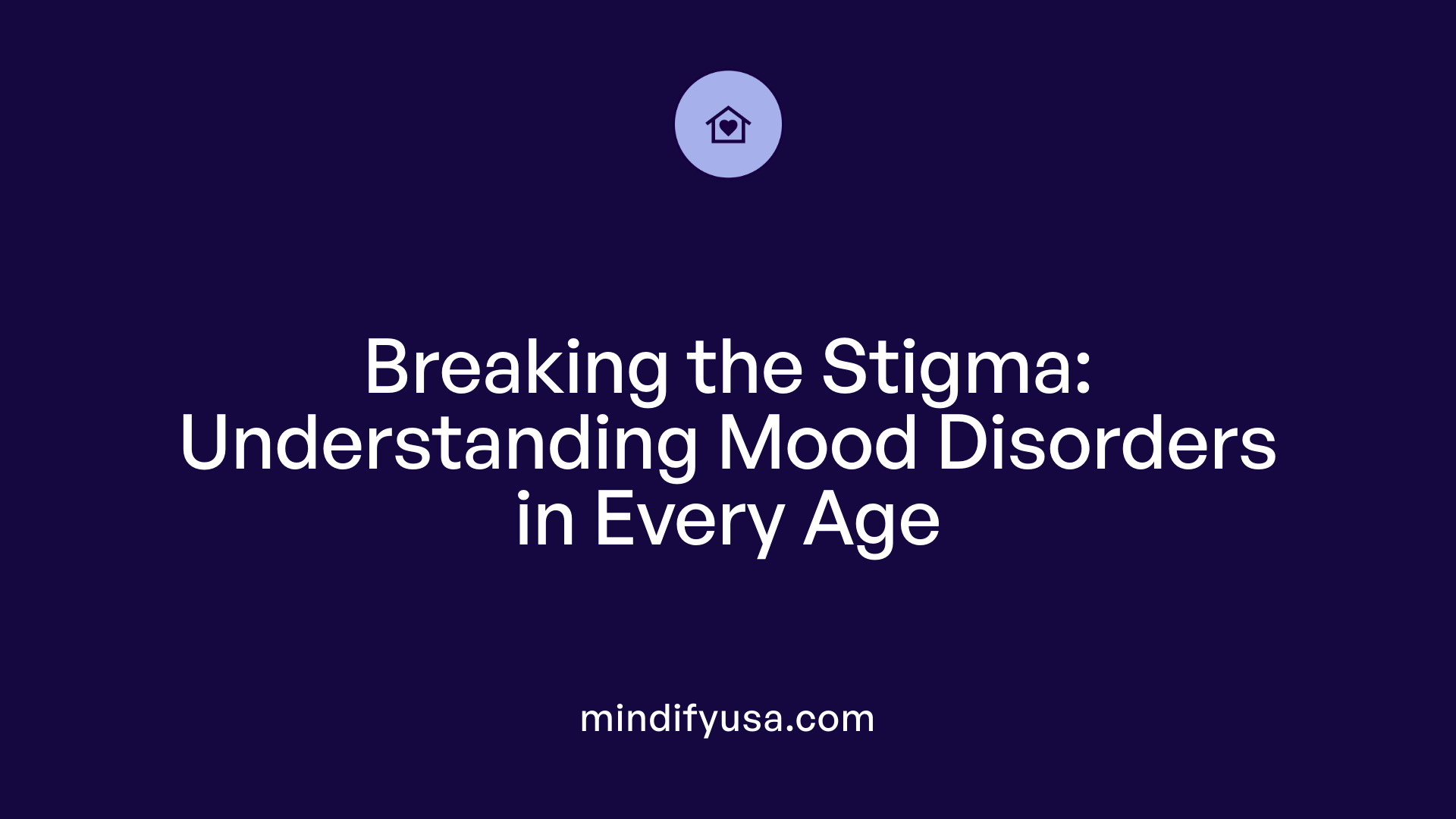
Addressing common misconceptions and reducing stigma surrounding mood disorders in various age groups
Vast misunderstandings about mood disorders persist across many communities, often leading to stigma that hinders individuals from seeking help. A prevalent myth is that these conditions reflect personal weakness or a lack of willpower. However, research clearly shows that mood disorders are complex mental health conditions influenced by biological, genetic, environmental, and hormonal factors.
In children and adolescents, misconceptions often include the belief that mood swings are simply normal developmental behaviors, dismissing serious conditions like bipolar disorder or severe depression. This can delay diagnosis and treatment, worsening long-term outcomes.
In adults and older populations, stigma may revolve around the idea that mood disorders are signs of personal failure or unmanageability, discouraging many from discussing their symptoms. Some societies wrongly associate mental illness with violence or unpredictability, further isolating those affected.
Addressing these misconceptions involves multifaceted approaches. Educational campaigns aimed at the general public can dispel myths by presenting facts and personal stories from those with lived experience. Promoting mental health literacy helps normalize these conditions, emphasizing that mood disorders are treatable and affect people of all ages.
Community programs, school-based initiatives, and media responsibility play vital roles in creating awareness. Training health professionals, teachers, and community leaders to recognize early symptoms and respond with empathy can foster safer environments for individuals to disclose their struggles.
Reducing stigma also involves challenging stereotypes related to specific life stages, such as postpartum depression in women or mood disturbances in the elderly. Recognizing that mood disorders do not discriminate by age helps promote early intervention.
Encouraging open conversations about mental health, emphasizing the biological basis of mood disorders, and promoting societal acceptance underpin efforts to reduce discrimination. Such initiatives empower individuals across all age groups to seek help without fear of judgment or rejection.
By fostering a compassionate understanding of mood disorders, society can dismantle barriers that prevent people from receiving essential care. A collective effort to dispel myths and normalize mental health issues creates a more inclusive environment where recovery and support are accessible to everyone.
Final Thoughts: Lifespan Approach and Future Directions
Understanding mood disorders through a lifespan perspective emphasizes the importance of early recognition, tailored interventions, and ongoing management. Biological, psychological, and social factors interact dynamically, influencing the course of these conditions from childhood to old age. Advances in research, diagnosis, and personalized treatments hold promise for improving outcomes and reducing the burden of mood disorders. Promoting awareness, education, and accessible resources is vital for transforming mental health care and fostering resilient, supportive communities for all individuals, regardless of age.
References
- Mood Disorders Across the Life Span | American Journal of ...
- Recognizing and Treating Mood Disorders Throughout the ...
- Recognizing and Treating Mood Disorders Throughout the ...
- Mood Disorders: What They Are, Symptoms & Treatment
- Bipolar disorder across the lifespan
- BEHAVIORAL HEALTH DISORDERS ACROSS THE LIFE ...
- Depression Across the Lifespan
- Understanding Mood Disorders: Symptoms, Causes, and ...
- Bipolar disorder across the lifespan












